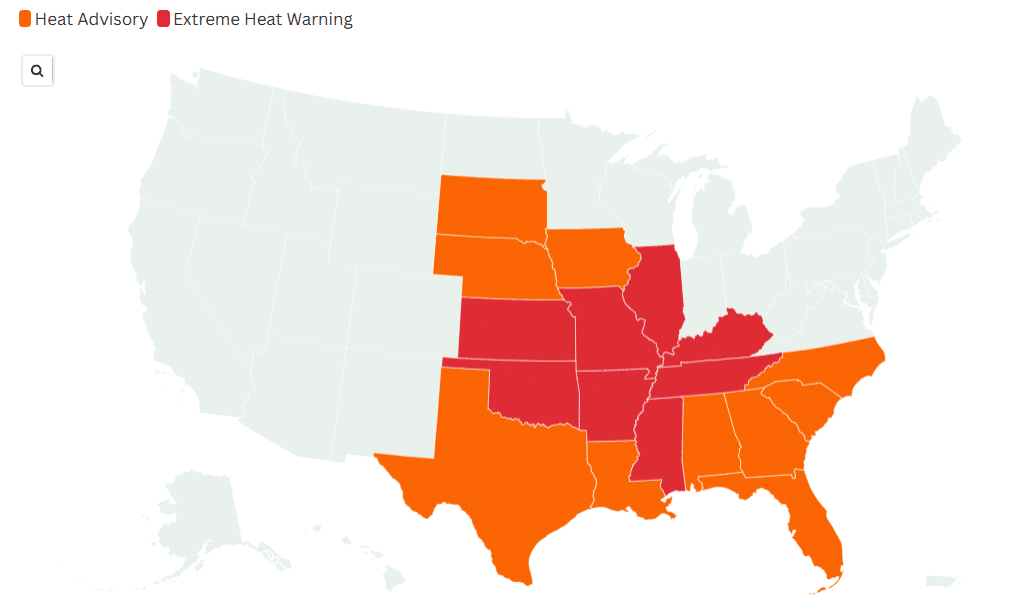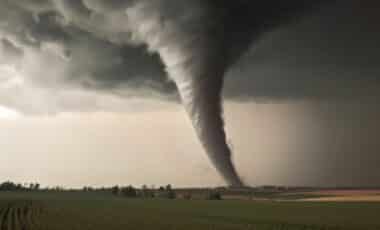As temperatures soar across the United States, weather authorities are issuing extreme heat wave warnings, urging residents to take precautions to avoid the health risks posed by extreme heat.
This heat wave is expected to impact millions of Americans, particularly those in vulnerable populations, such as the elderly and those with underlying health conditions. The warnings, issued by the National Weather Service (NWS), cover several states where the combination of high temperatures and humidity will create dangerous conditions.
This extreme heat comes with a significant public health risk, prompting advisories from health agencies such as the Centers for Disease Control and Prevention (CDC). With more than 700 deaths attributed to heat-related illnesses annually in the United States, the potential dangers are clear. Experts are stressing the importance of staying hydrated, avoiding outdoor exertion, and taking other necessary precautions to stay safe.
Heat Warnings and Heat Index Values
Extreme heat warnings are in effect for large portions of the United States, including parts of Kansas, Oklahoma, Arkansas, Missouri, Mississippi, Tennessee, Kentucky, and Illinois. The NWS issued these warnings when it determined that “extremely dangerous heat conditions” were either occurring or expected to occur. Heat index values, which combine the effects of temperature and humidity, are forecasted to reach triple digits in these regions.
In particular, areas like north-central and northwest Mississippi could experience heat indices as high as 115°F. The combination of high temperatures and humidity can make the heat feel even more intense, posing significant risks to those who may be unprepared for such extreme conditions.

Some states had a combination of alerts in effect.
The Risk to Vulnerable Populations
Certain groups of people are at greater risk of suffering from heat-related illnesses during extreme heat events. The CDC notes that elderly individuals, children, and those with chronic health conditions are especially vulnerable. These groups are more likely to experience severe symptoms like heat stroke, which can lead to hospitalization or even death if not addressed immediately.
In addition to these vulnerable populations, anyone without access to cooling systems or effective hydration is also at heightened risk. Local authorities are urging residents to stay in air-conditioned environments, limit outdoor activities, and avoid alcohol, which can further contribute to dehydration.
Expert Forecast on Heat WaveDome
Meteorologists predict that a heat dome will cause near-record-breaking temperatures in the South-Central U.S. this week. Cities such as Wichita Falls, Dallas, and Kansas City are expected to reach 100°F for the first time this season. While the daytime highs will be oppressive, nighttime temperatures will remain warm, hovering in the 70s and 80s, providing little relief from the heat.
AccuWeather meteorologist Kai Kerkow explained that this heat dome is expected to gradually move eastward later in the week, impacting the Mid-Mississippi Valley and Midwest. The spread of the heat will increase risks in additional areas as the week progresses.
Ozone Pollution and Health Risks
Alongside the extreme heat, rising temperatures are likely to exacerbate ground-level ozone pollution. Ozone pollution, which occurs when sunlight reacts with pollutants like car exhaust, is more likely to form in extreme heat. This pollution can trigger respiratory problems, especially in individuals with asthma or other lung conditions.
The combination of extreme heat and high levels of ground-level ozone poses a serious health threat, particularly in urban areas where air quality may already be poor. Health experts are urging people to limit their time outdoors during peak heat and to be aware of air quality advisories issued in their areas.
The current extreme heat warnings are in effect until Thursday at 7 p.m. CDT, with weather officials continuing to monitor the situation. The NWS has stated that it will provide regular updates, ensuring that residents remain informed as the heatwave progresses. Local authorities are encouraging people to stay up to date with the latest weather forecasts and to take necessary actions to protect their health during this ongoing heat event.









